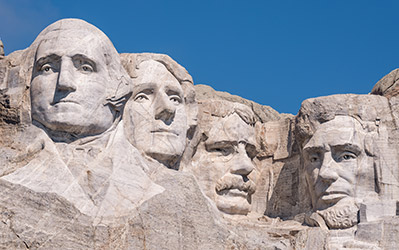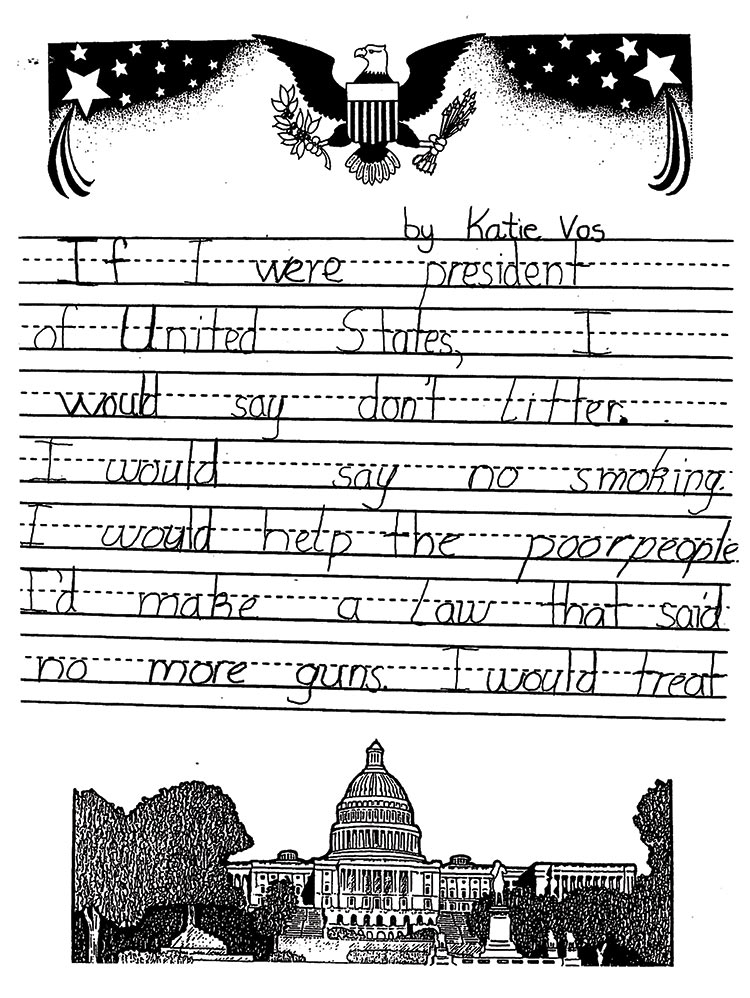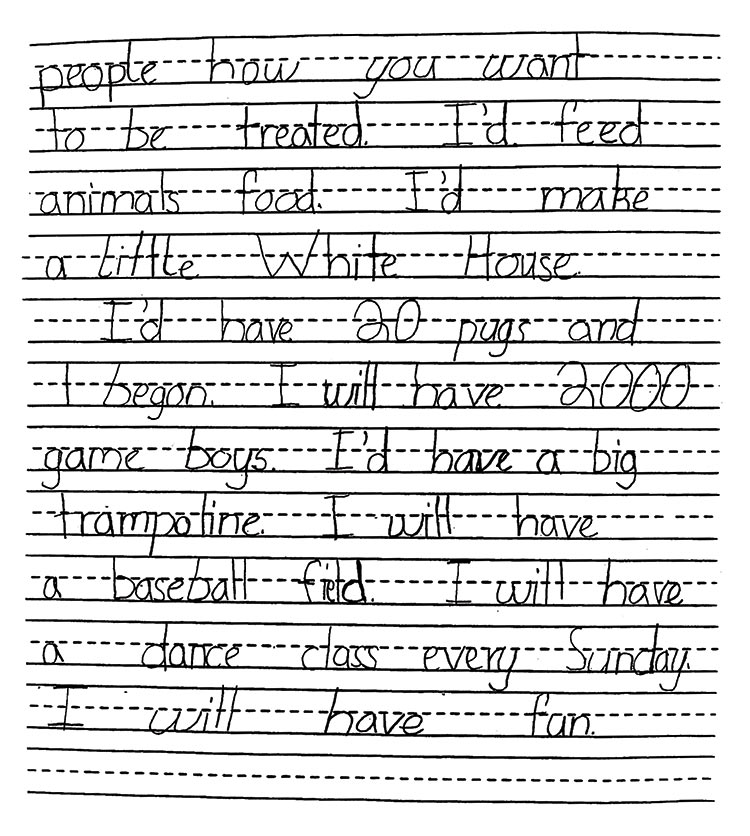
This Presidents' Day, awaken your students' interest in the past! Help young learners delve into U.S. history by using these exciting activities in your primary classroom.
Presidential Quotes
Start out the month of February with 10 presidential quotes. Put these quotes on display in your classroom and share one a day. You'll be surprised how many have relevancy in your young learners’ lives. On Presidents' Day, have students choose their favorite quote and write what it means to them.
“Believe you can, and you're halfway there.”—Theodore Roosevelt
“Never put off until tomorrow what you can do today”—Thomas Jefferson
“I'm a great believer in luck, and I find the harder I work, the more I have of it.”—Thomas Jefferson
“It is better to be alone than in bad company."—George Washington
“I cannot live without books.”—Thomas Jefferson
“Honesty is the first chapter in the book of wisdom.”—Thomas Jefferson
“If you can’t stand the heat, get out of the kitchen.”—Harry Truman
“The only thing we have to fear is fear itself.”—Franklin D. Roosevelt
“You don't lead by hitting people over the head—that's assault, not leadership.”—Dwight D. Eisenhower
“Ask not what your country can do for you—ask what you can do for your country.”—John F. Kennedy
If I Were President . . .
This February, ask your students, "What would you do if you were president?" This creative writing project helps students thoughtfully explore the idea.
Start by sharing books and Web sites about the lives of past presidents:
Suggested Primary Books About Presidents
A Picture Book of Abraham Lincoln, David A. Adler, Alexandra Wallner, and John Wallner
A Picture Book of George Washington, David A. Adler, Alexandra Wallner, and John Wallner
Abe Lincoln Remembers, Ann Turner and Wendell Minor
Abe Lincoln: The Boy Who Loved Books, Kay Winters and Nancy Carpenter
Abe Lincoln: The Young Years, Keith Brandt and John Lawn
Abe Lincoln's Hat, Martha Brenner and Donald Cook
Abraham Lincoln: The Civil War President, Ginger Turner and Saral Tiwari
Don't Know Much About the Presidents, Kenneth C. Davis and Pedro Martin
George Washington's Breakfast, Jean Fritz and Paul Galdone
George Washington's Teeth, Deborah Chandra and Madeleine Comora
If You Grew Up with Abraham Lincoln, George Ulrich
Mr. Lincoln's Whiskers, Karen B. Winnick
My Teacher for President, Kay Winters and Denise Brunkus
The Boy Who Looked Like Lincoln, Mike Reiss and David Catrow
What Presidents Are Made Of, Hanoch Piven
Then have your students discuss the characteristics they think a person needs to be a great president. Do your students have what it takes? Have them answer these questions:
- How would I improve the lives of people in my country?
- How would I improve the environment?
- What laws would I pass?
- What changes would I make to the White House?
- What activity would I enjoy most as president?
- What part of being president would be most difficult?
Finally have your students write what they would do if they were elected president.


Once their writing projects become final drafts, consider making a presidential display of their work. Using a projector, draw and cut out silhouettes of each student. Display their stories underneath their silhouettes. Or perhaps compile their writing into a book and send it off to the White House. You might even end up with a surprise response!
Use this minilesson to help your students think about their presidencies.
Compare and Contrast
Many primary books about presidents depict their lives in childhood as well as adulthood. Students who read such books naturally compare their own lives with those of the presidents and think how life has changed throughout American history. This activity deepens their thinking.
Pick a president (Abraham Lincoln is always a favorite!) and have your students create a Venn diagram, comparing and contrasting their lives with the president’s life.

Then have your students create a trifold.
- On the first page, students write things they have in common with the president.
- On the second page, they write facts true only for the president.
- On the third page, they write facts true only for themselves.
Finally, students should create a cover with a picture of the president and one of the student.
Use this minilesson to help your students create a presidential comparison and contrast.
Presidential Time Line
Help students visualize the sequence of events in a president's life by creating a time line. They can do this project individually, in pairs, or in small groups.
Start by asking students to pick a president to research. Provide books or online resources that list events in a president’s life by date. (The example uses The Picture Book of George Washington by David Adler.) Have your students research their presidents, describe important events in a notebook or on index cards, and record the date of each. Afterward, students should place events in chronological order. Then ask your students to create a time line by hand or on computer and present it to the class. Inspire them with this example:
Important Dates in George Washington’s Life
1732—George Washington was born in a Virginia farmhouse.
1748—George was given a job surveying land in the Virginia wilderness.
1754—He fought on the side of England during the French and Indian War.
1758—George married Martha Curtis and moved to Mount Vernon.
1775—He became the general of the Continental Army in the American Revolutionary War.
1783—The colonists won their independence.
1789—George Washington became the first president of the United States of America.
1799—George Washington grew ill and died.
Use this minilesson to help students create their time lines.
If I Were a Pet in the White House
Students love to imagine being animals, so why not have them imagine being White House pets? The White House has had more than 400 pets, and some were not your typical dog or cat.
Read aloud a book such as Wackiest White House Pets by Gibbs Davis and David A. Johnson or Presidential Pets: The Weird, Wacky, Little, Scary, Strange Animals That Lived in the White House by Julia Moberg and Jeff Albrecht. Then have your students write a story from the point of view of a White House pet.
- Who is your president?
- What kind of pet are you?
- What are you given to eat?
- Where do you sleep?
- What is your favorite daytime activity?
- What kind of personality do you have? (cuddly? scary? brave? fierce? protective? goofy? something else?)
- Have you ever frightened or made someone laugh in the White House? What happened?
- What is your most memorable story about the president?
- What is the best part of living in the White House?
Use this minilesson to inspire your students to write their White House pet stories.